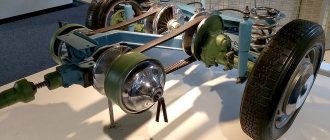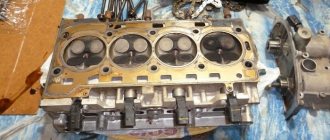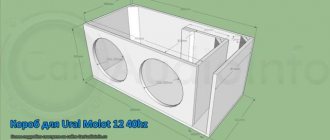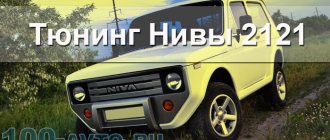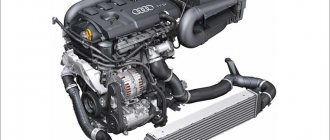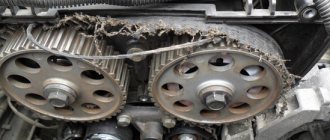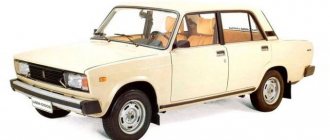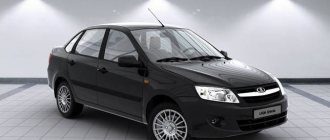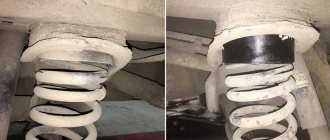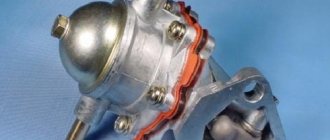The CVT variator transmission is quite common today, although ten years ago in the CIS this type of automatic transmission was relatively rare. At the same time, as practice shows, many car owners do not even know that the car is equipped with a CVT, and not a “classic” hydromechanical automatic transmission.
Also, some owners of cars with a CVT believe that this gearbox is no different from a traditional automatic transmission, that is, when operating, drivers adhere to the same rules as when driving a regular automatic transmission. In fact, this is a common mistake. Moreover, it is partly for this reason that the CVT variator has gained fame as a problematic, expensive transmission with a short service life and prone to early breakdowns.
In this article, we will look at what a variator gearbox is, operation, features of a gearbox of this type, as well as how to drive a variator in order to preserve the intended resource, avoid premature breakdowns and increase the overall service life of the unit.
Jerks
A similar effect can be observed when you slip a wheel and suddenly it hits a hard surface. That is, rotating at high speed on ice, for example, it stops abruptly when it reaches the asphalt. There is a shock in the transmission. Or when towing another vehicle. You take off, the cable tightens, and you suddenly stop. The blow comes again.
In both cases, the belt may slip along the pulley. One such slip will be enough to scratch the pulley. After this, increased wear and rapid “death” of the gearbox occurs.
Unlike climbing a curb, the electronics do not protect the CVT in such situations. It simply does not have time to “strangle” the engine in order to reduce the torque on the pulley and protect the variator.
If there is an urgent need to pull someone out with a cable or drive yourself out of a snow mess, there are small tricks that will help save your continuously variable transmission.
When towing with a cable:
- Smoothly select the length of the cable so that it becomes taut.
- When it reaches its maximum length, release the gas pedal. The inertia of your car will be enough to pull someone out of the mud or carefully take off from a standstill without damaging the CVT.
If your wheels slip on ice:
No need to press the gas pedal to the floor. To make the wheels spin on ice and the car to get out of the slippery surface, just press the gas halfway. When the wheel reaches the asphalt, the box will not feel a strong impact.
Advantages and disadvantages
Let's start with the advantages:
- Rapid acceleration of the car when driving. This advantage is achieved thanks to the design features of the unit.
- The driver does not have to waste time switching from one driving mode to another. This makes it easier to control the machine.
- Soft and smooth ride. Due to the absence of steps, the variator accelerates smoothly when increasing speed.
- Fuel savings compared to classic automatic machines.
Disadvantages of CVT transmissions:
- Difficulty of operation. To prevent damage to the unit, the driver must take into account the requirements for using the car. Despite the fact that the Outlander model is an SUV, its constant off-road use is not allowed.
- CVT gearboxes do not adapt well in urban operation.
- Difficulty of repair. Structurally, the variator is a complex unit. There are not many specialists in our country who can perform qualified gearbox repairs. Finding original spare parts is sometimes problematic.
- If you turn to specialists for help, the cost of changing the lubricant will be high. But it is not so easy to complete this task yourself.
- High cost of repairs in general. Spare parts for CVT transmissions are expensive.
Separately, it is worth considering the issue of reliability. Many car owners in reviews say that the CVT is not reliable. Its operation often exhibits malfunctions. But as practice shows, most problems are associated with violation of operating rules. The variator itself is a reliable unit, it just needs to be used correctly.
Maintenance or how to extend the life of a variator
There are a number of operating features and recommendations on how to protect a car with a front-wheel drive CVT, as well as an all-wheel drive or rear-wheel drive version.
Monitor the sensors
The peculiarity of CVT is depending on the operation of the sensors. Failure of any of them can lead to failure of the variator. That is why it is necessary to monitor their serviceability and replace them at a Jatco station if necessary. You can diagnose and fix problems of any complexity at the CVT Repair Center No. 1.
Get additional information by calling: Moscow - 8, St. Petersburg - 8. We accept calls from any region.
Timely replacement of transmission oil
The frequency of filling new oil in a car with a CVT is indicated in the operating instructions. On average, replacement needs to be done every 40,000 km. When using a car in difficult conditions, it is better to replace it after 30-35 thousand.
This especially needs to be taken into account when:
- abuse of towing;
- aggressive driving style;
- staying in traffic jams for a long time;
- frequent off-road trips.
If this is not done, there is a high risk of wear on the splines, cones and belt.
Towing
Towing a car with a CVT is quite unsafe, as it can result in a malfunction of the engine, which is not intended for this purpose. The only option for towing a car is to turn on the engine and, preferably, be confident in your knowledge of how to operate the car. It makes sense to tow with a rigid or flexible hitch and always with the selector in neutral. In the absence of these conditions, a partial loading method is possible, but only if the drive wheels are suspended. Despite this, a breakdown is possible, so first it is strongly recommended to learn how to use the variator correctly.
Misconception 5. Cars with a CVT have slow acceleration
The CVT provides the fastest acceleration an engine can provide. Just to get this result, you must remember to press the gas pedal all the way. In this mode (kick-down), the engine quickly reaches speeds corresponding to maximum power, and further acceleration occurs due to the variable gear ratio in the variator. This is the most effective overclocking. Any other gearbox paired with the same engine will be less efficient during acceleration.
Another thing is that the engine howls almost on the same note. The monotony gives the impression that the acceleration takes too long, hence the misconception.
E-CVT box
This is a type of continuously variable transmission for hybrid vehicles. A logical question will arise: “Do the rules for driving a CVT apply to e-CVT boxes?” - No, they don’t.
This is a completely different gearbox, although only one letter in the name has been changed. This unit is designed for hybrid cars and has nothing in common with a simple CVT. This gearbox is considered by many to be “unkillable”; its reliability is an order of magnitude higher than that of a classic automatic transmission, not to mention CVT transmissions. But we will talk about this in detail in a separate article.
Sensor monitoring
You must always be sure that all sensors are in good working order, because in long-term driving conditions you need to be sure of safe travel. If any of the sensors stops functioning, this can lead to problems with the entire unit. If the speed control sensor is damaged, the control unit does the following: first, it moves the transmission belt to the middle emergency position, after which the engine begins emergency braking. As a result, the belt may become deformed.
Operating a used variator involves replacing the speed, oil level and pressure sensors.
Overheat
There are two devices in the CVT box that generate a lot of heat. It can cause the entire gearbox to fail. So let's look at these two devices, why and under what conditions they generate increased heat.
Torque converter or clutch pack
Yes, in some CVT models there is a “donut” installed between the gearbox and the engine. It serves as a clutch. The torque converter is the first to take over the engine torque when starting off or driving at low speeds.
In continuously variable automatic transmissions, the torque converter is almost always locked . The exception is when the car is moving at low speed or standing still. At this moment the “donut” is unlocked, it begins to slip, generating a lot of heat.
Some CVT models use a clutch pack instead of a torque converter. This is also a clutch, the operating principle is different from the “donut”, but the ability to generate heat when slipping is the same. Plus, they wear out faster and emit friction dust during wear .
Box
During operation, the box itself generates heat. It is already known from the design of the variator that instead of toothed gears, a belt is responsible for shifting gears. Friction occurs between the belt and pulleys.
The smaller the diameter of any of the pulleys, the smaller the area of contact with the belt. Grip decreases and friction increases. This leads to the release of heat.
In order not to kill the variator, you need to carefully monitor the cooling system of the box. Check radiators for cleanliness and clean them if necessary.
Selector symbols
To know how to drive a CVT correctly, you need to be fairly knowledgeable about the symbols used on the selector. The letters that appear on the box instead of the numbers used on the mechanics indicate the following:
- "P" - parking mode. The use of this mode is necessary when parking the car. Using this mode, you minimize the possibility of the car moving without your knowledge.
- "D" - car movement. This letter indicates the vehicle is moving forward. The gear ratio is changed by the car itself, and electronic systems allow for greater performance.
- “R” – reverse. The variator device does not provide for reversing movement due to the lack of reverse movement of the driven shaft, which transmits rotation to the drive wheels. This movement capability was added additionally.
- “N” is an analogue of “neutral”. This position disconnects the power plant from the box. It is not advisable to use the neutral position during every stop. A special feature of using this variator mode is that the gearbox shaft is blocked during parking, and not the wheels. Because of this, when stopping the car with the brake pedal, you must move the selector to position N, activate the handbrake, release the brake and press it again. After this, you can move the selector to the parking position.
Designation of letters on the box
The following modes are optional and may only be available on some vehicle models.
- “L” - increase in speed and engine braking effect. Driving using this control mode provides traction to the drive wheels. The mode is intended for difficult conditions of car use.
- "S" - sporty. Used when extreme driving is required.
- "E" - economical. This mode ensures low fuel consumption due to maximum interaction between the engine and the gearbox.
Misconception 2. The variator has a belt
Most designs actually use a belt made up of a large number of steel plates held in place by a belt. But some manufacturers prefer to use a chain. It looks almost the same as an engine timing chain. Only contacts the cones. Torque is transmitted by the ends of the rods connecting the plates. Such a variator is called a chain variator. Chain CVTs are used, for example, by Subaru and Audi.
The Subarov variator uses a chain drive. This design can withstand more torque than the belt can transmit.
The Subarov variator uses a chain drive. This design can withstand more torque than the belt can transmit.
